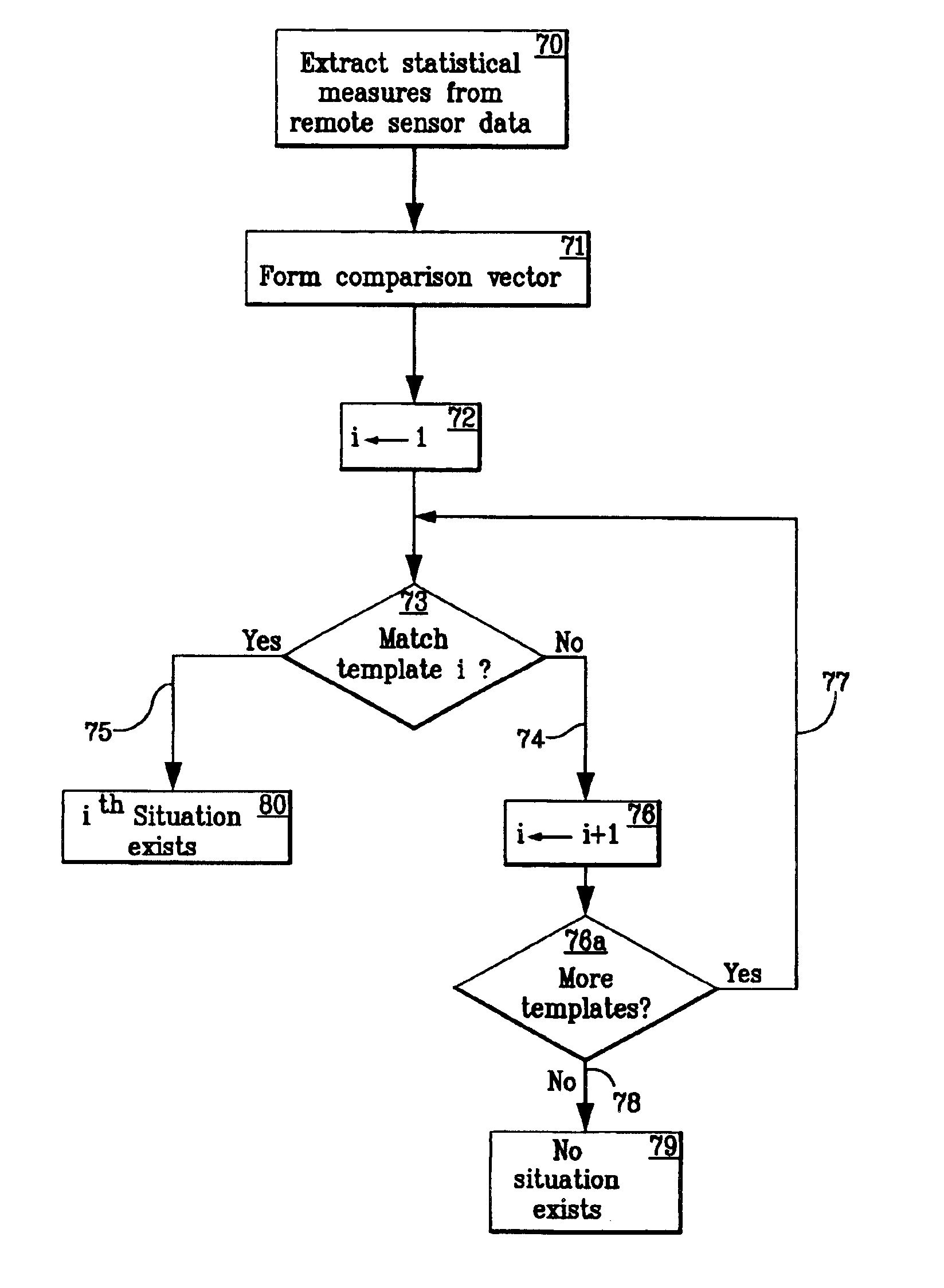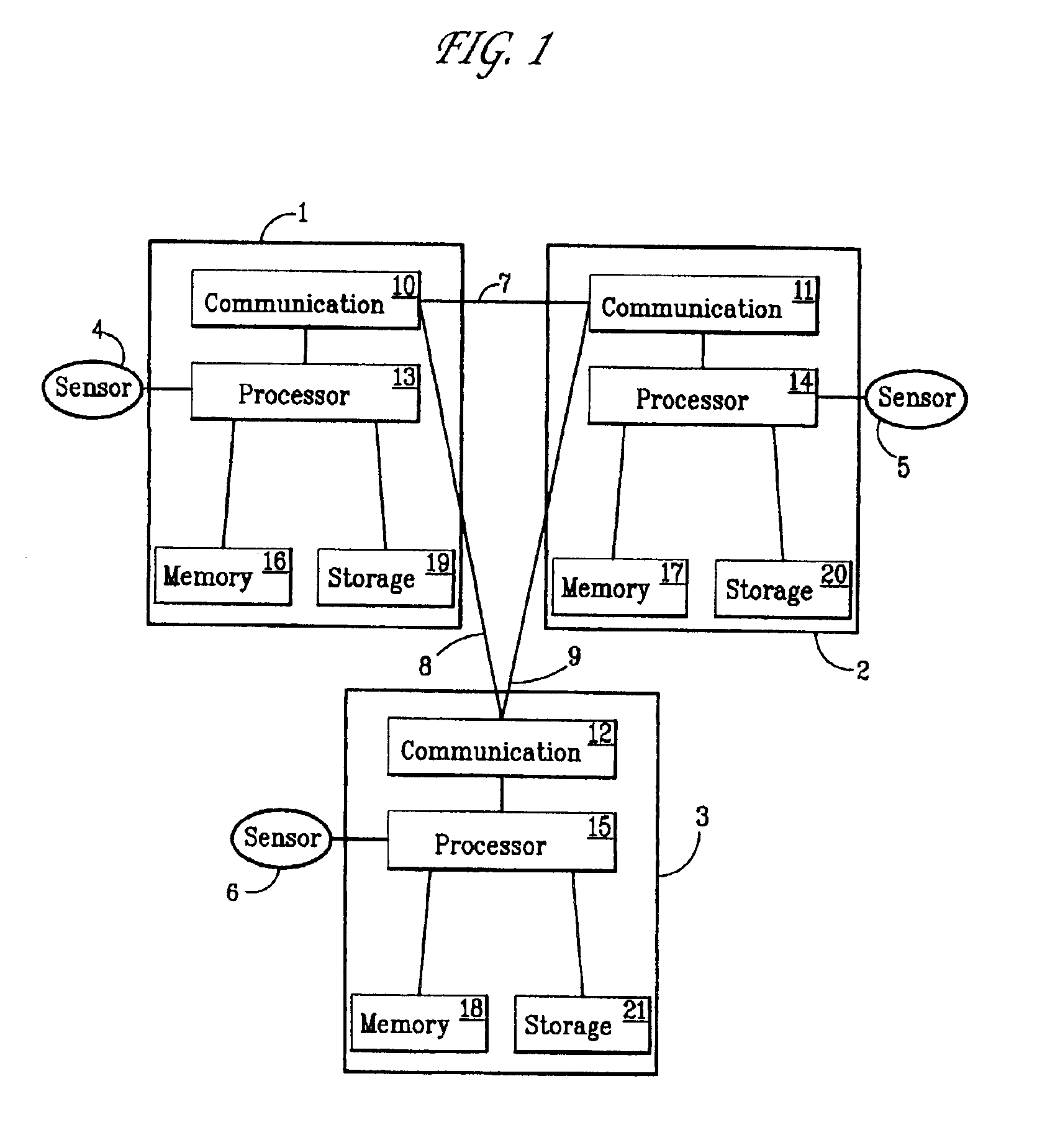Aggregation of sensory data for distributed decision-making
a technology of sensory data and decision-making, applied in the field of computer systems, can solve the problems of application limitations on data obtained, achieve the effects of reducing risk, facilitating group consensus, and improving user access to resources
- Summary
- Abstract
- Description
- Claims
- Application Information
AI Technical Summary
Benefits of technology
Problems solved by technology
Method used
Image
Examples
Embodiment Construction
A preferred embodiment of the invention, including a description of the method employed and the necessary apparatus, will now be described.
FIG. 1 shows a block diagram of three computers, 1, 2 and 3, each with one sensor 4, 5 and 6, communicating with each other over communications links 7, 8 and 9. Each computer is comprised of a processor 13, 14 and 15 capable of communicating with memory 16, 17 and 18 and with storage 19, 20 and 21, and with a communication subsystem 10, 11 and 12. For example, processor 13 uses communication subsystem 10 to communicate with computer 2 over communication link 7. Processors 13, 14 and 15 are also capable of obtaining sensed data from sensors 4, 5 and 6, respectively.
FIG. 2 shows a block diagram of the software in computers 1, 2 and 3. During execution this software typically resides in memory 16, 17 and 18, respectively, of FIG. 1. The three major software components are the operating system 36, 37 and 38; middleware 33, 34 and 35, and application...
PUM
 Login to View More
Login to View More Abstract
Description
Claims
Application Information
 Login to View More
Login to View More - R&D
- Intellectual Property
- Life Sciences
- Materials
- Tech Scout
- Unparalleled Data Quality
- Higher Quality Content
- 60% Fewer Hallucinations
Browse by: Latest US Patents, China's latest patents, Technical Efficacy Thesaurus, Application Domain, Technology Topic, Popular Technical Reports.
© 2025 PatSnap. All rights reserved.Legal|Privacy policy|Modern Slavery Act Transparency Statement|Sitemap|About US| Contact US: help@patsnap.com



